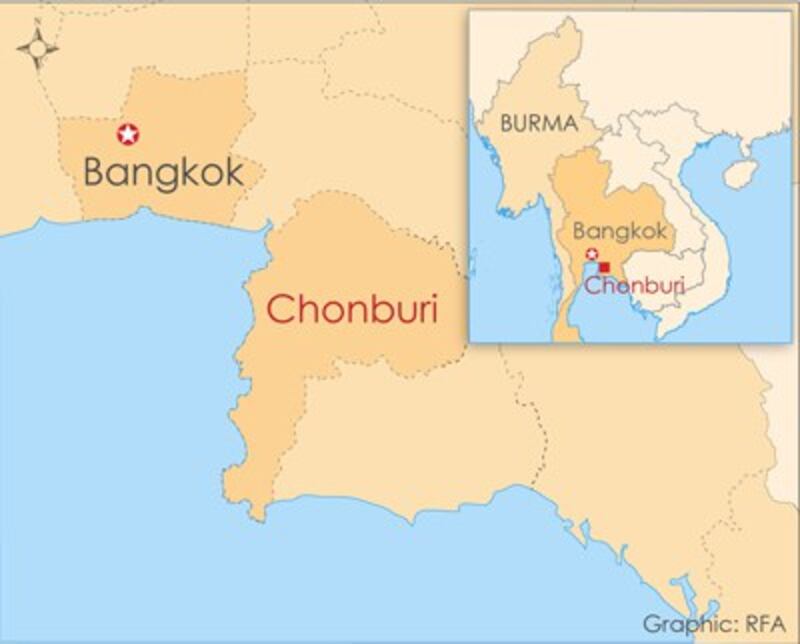Thai police have detained six suspected human traffickers and rescued nearly two dozen of their Burmese victims who were forced to work on a fishing vessel under ‘slave-like’ conditions, according to rights groups and victims.
The police, accompanied by rights activists, raided a house in Achaung, in eastern Thailand’s Chonburi coastal province, at around 3:00 a.m. on Friday and found the 23 Burmese men victims, some of whom had been believed held for more than a year.
One of the victims, 16-year-old Maung Ayok from Zalotgyi village in Pegu division’s Htandabin township, escaped while the boat loaded cargo at port in Thailand. He contacted the Burmese Association in Thailand (BAT), a rights group which monitors Burmese migrants in the country, which then notified Thai authorities, leading to the raid.
Held during the police action were four suspected traffickers, while another two Burmese men linked to the smuggling syndicate were detained in Bangkok, based on information from the trafficking victims.
Two ethnic Mon women from Burma were among the traffickers arrested in the boat raid, according to reports.
Most of the victims are from ethnic Burmese groups, including the Karen minority, from Pegu division, who had crossed the Thai border near Mae Sot with the assistance of brokers to look for work. Several of them had been passed on to the fishing boat operator in the coastal town of Mahachai on their way to Bangkok.
At least three of those rescued were just 16 years old, reports said.

‘Slave-like’ conditions
One worker showed RFA’s Burmese service the conditions he had to endure during his siege.
“I was locked up in this room while two guards stayed outside. We were taken out only to work on the boat, and then locked up again after we were done. We didn't get paid at all,” he said.
Another described how he had been taken advantage of by fellow Burmese who had sold him into slavery.
“I was sold from one trafficker to another by our own countrymen, not by the Thai boat owner. It is only our countrymen who are involved in this ring,” he said.
Another man, who had traveled to Mahachai from Bangkok, said he had been kidnapped on the way and sold by a trafficker to the boat operators.
Kyaw Thaung, a member of BAT, was quoted by Burmese exile news group The Irrawaddy as saying that the trafficking victims had lived in conditions better suited to animals and that few of them had more than one set of dirty clothing.
“They were locked up the whole time and watched by two guards,” he said.
Six of the victims are being housed in Thailand’s Nonthaburi province and the rest are being sheltered at an office to combat human trafficking in Bangkok. The victims may have to wait three to four months for Thai courts to investigate and prosecute the traffickers before returning to Burma.
The U.S. State Department’s annual Human Rights report lists Thailand as a source, transit, and destination for victims of human trafficking for a variety of purposes, including work at factories.
Human trafficking is common in southern Thailand where Burmese migrants are commonly snatched up by trafficking gangs to work on the boats of the large fishing industry—often for months at little or no pay.
About 200,000 to 450,000 people are trafficked annually in the Greater Mekong subregion, which includes southern China, Laos, Burma, Thailand, Cambodia, and Vietnam, the countries joined by the Mekong River, according to the United Nations Office on Drugs and Crime.
Reported by RFA’s Burmese service. Translated by Khin May Zaw. Written in English by Joshua Lipes.
